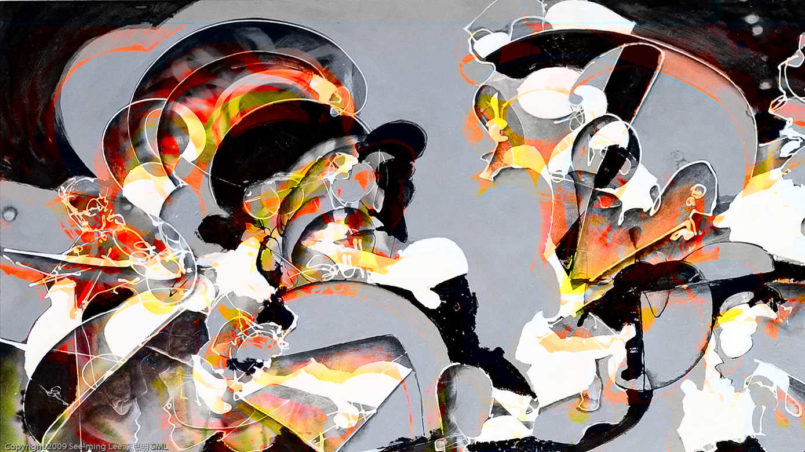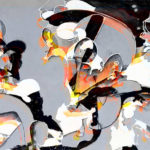The Gnostic Worldview

The rediscovery of the Gnostic worldview, lost over several centuries, could provide humanity with an important orientation for the evolution of our species in these extraordinary times.
For a very long time, any information about a group of mystics, the Gnostics, had been lost along with their wisdom. However, a notable find in 1945 in Nag Hammadi, Egypt, changed that. These are the Nag Hammadi writings, also known as the Nag Hammadi Library. It consists of thirteen leather-bound codes with a total of 52 texts, which are unique literary artifacts.
With his fascinating work “Not in His Image”, John Lamb Lash sheds light on the teachings and wisdom of the Gnostics.
The Gnostic vision of life is not an alternative religion. It is an alternative to all religions.
(John Lamb Lash)
Destruction of pagan culture
Before Christianization, various indigenous cultures existed in Europe, which today are referred to as “pagan peoples”. In this sense, Gnostics also counted as heathens, since according to the definition, they belonged to no monotheistic religion.
Gnostics were not a particular group of peoples, but people who were in possession of the so-called “gnosis”. The word “knowledge” derives from “gnosis.” It is not necessarily about intellectual knowledge, but about profoundly esoteric wisdom.
The practice of gnosis is a way of apprehending directly the existential reality of the cosmos, and participating in how the cosmos acts in the human psyche.
(P.187)
Gnosticism was not a belief, but an understanding of reality. This wisdom was passed on in the ancient Mystery Schools, where well-known Greek scientists and philosophers like Plato and Pythagoras broadened their horizon of knowledge. Likewise, a place of gnosis was the library of Alexandria, which possessed a breathtaking collection of esoteric texts and knowledge.
With the institutionalization of Christianity and its appointment as the most important religion in the Roman Empire by Emperor Constantine in 325 AD, its worldwide expansion began. In doing so, the Christian faith was forcibly imposed and the various pagan cultures that existed before were systematically destroyed because death was the penalty for refusal to convert. Emperor Theodosius’ personal mission in the 4th century AD was to destroy all Gnostic and pagan scriptures.
The brutal suppression of the mysteries, the destruction of Gnostic writings, and the wholesale genocide of Pagan culture in Europe belong to the untold story of Western civilization and the triumph of Christianity.
(P.16)
This triumph of the Christian religion in Europe was preceded by a genocide of indigenous peoples, history was written by the victors and their actions legitimized in the name of God.
The “Redeemer Complex”
In traditional discourses, a myth is often misunderstood as a lie. A myth, whether fact or invented though, is but a story. Since stories are meaningful to people, believing in a story should be up to everyone themselves.
The myth of God as a loving, almighty Father, whose will man has to obey, is still the most dominant story in the psyche of humanity, as represented by the monotheistic religions. Obedience to earthly representatives, the ecclesiastical authorities, provided redemption at the end of life.
From the perspective of the Gnostics, this view of an overpowering God, whom people should obey for the purpose of their salvation, corresponded to a pathology of the human psyche. For them, this “Saviour Complex” was a delusion, since they believe that man can only free himself with his own will and spirit.
In contrast to the subjugation of a deity, man should be supported for self-empowerment.
They posited an ongoing educational process for the enlightenment of humanity, a system of cultivating human potential and the awakening of the genius innate to our species, but no plan of salvation as such.
(P.111)
From the perspective of the Gnostics, the human species has an innate intelligence that they call “Nous.” Furthermore, man is equipped with a special talent, called “Epinoa” (as much as imagination, creativity) which has a significant influence on his experienced reality.
Instead of the indoctrination of a worldview in which the general public surrenders its power to a superhuman saviour, the destiny of the Gnostics in the spiritual guidance of humanity was their self-empowerment. Is the insight that, as an individual, you have the power to change reality an aspect of gnosis?
Myth of the goddess Sophia
In his analysis of the Nag Hammadi Library, John Lamb Lash reconstructed the myth of the goddess Sophia, which was one of the central aspects of the Gnostic worldview. Sophia, the wisdom, is Mother Nature herself. Also known as Gaia, the goddess Sophia is embodied in planet Earth. Contrary to the myth of a dark end time followed by a devastating apocalypse, the Sophia myth has an open ending.
Failing to own and evolve the intelligence innate to our species, we risk being deviated by another kind of mind, an artificial intelligence through which we become unreal to ourselves.
(P.117)
According to the Gnostics, the future awaiting us as a species depends on whether we, as a species, reconnect with our Mother Nature and take responsibility for our planet again.
Translation from German: Serena Nebo
Credits
| Image | Title | Author | License |
|---|---|---|---|
 |
Gnosis – Illuminati | See-ming Lee | CC BY-SA 2.0 |
